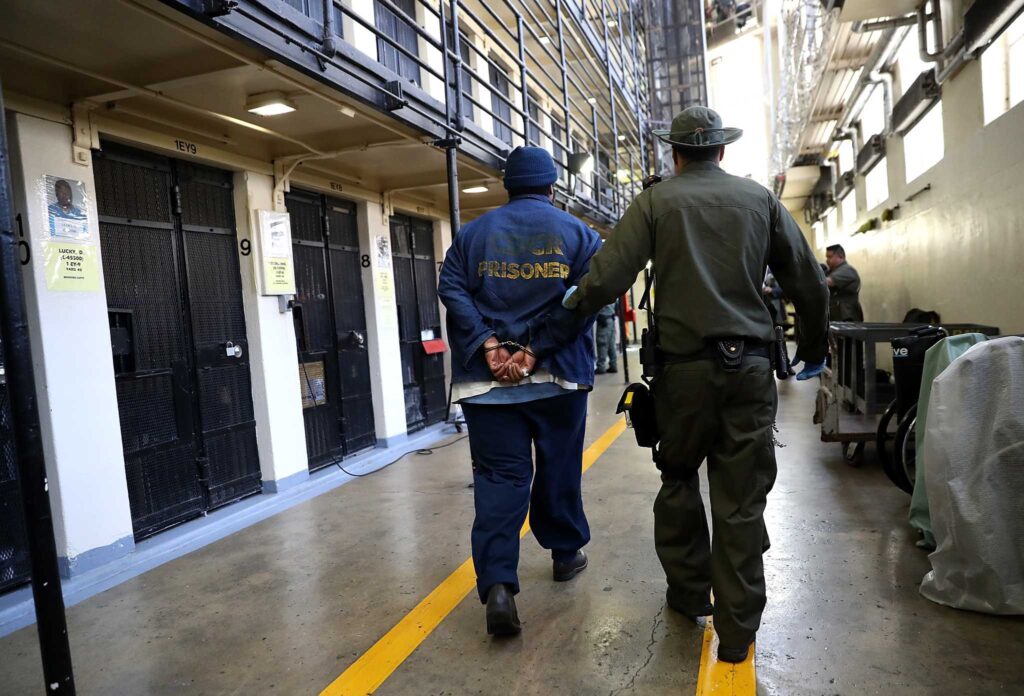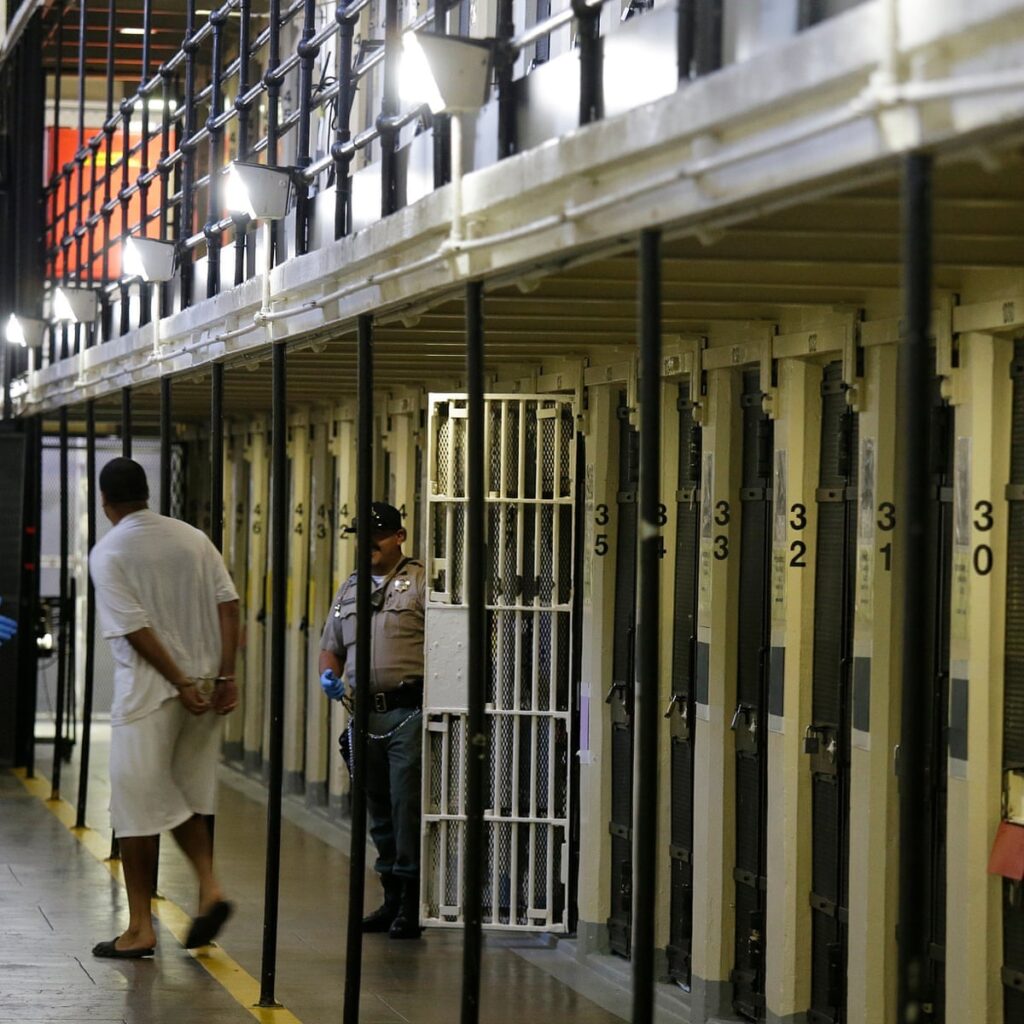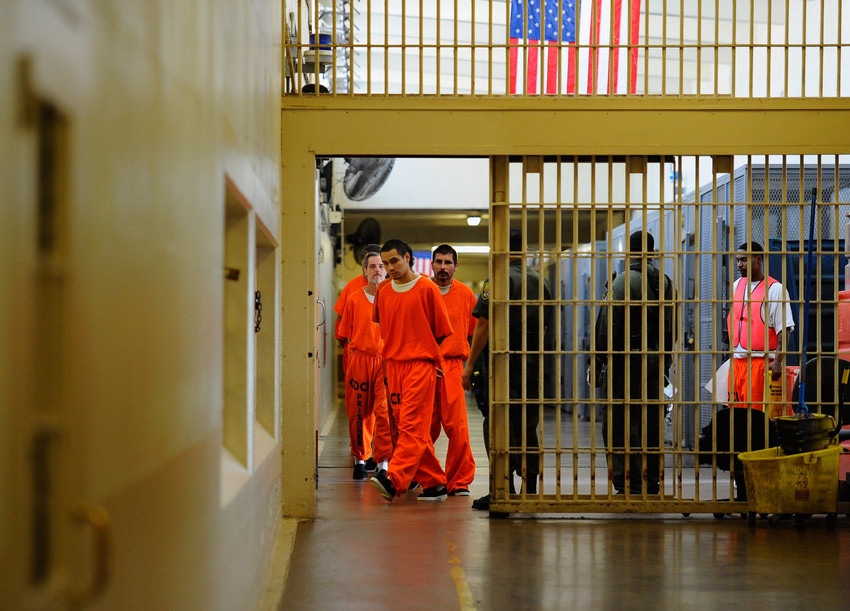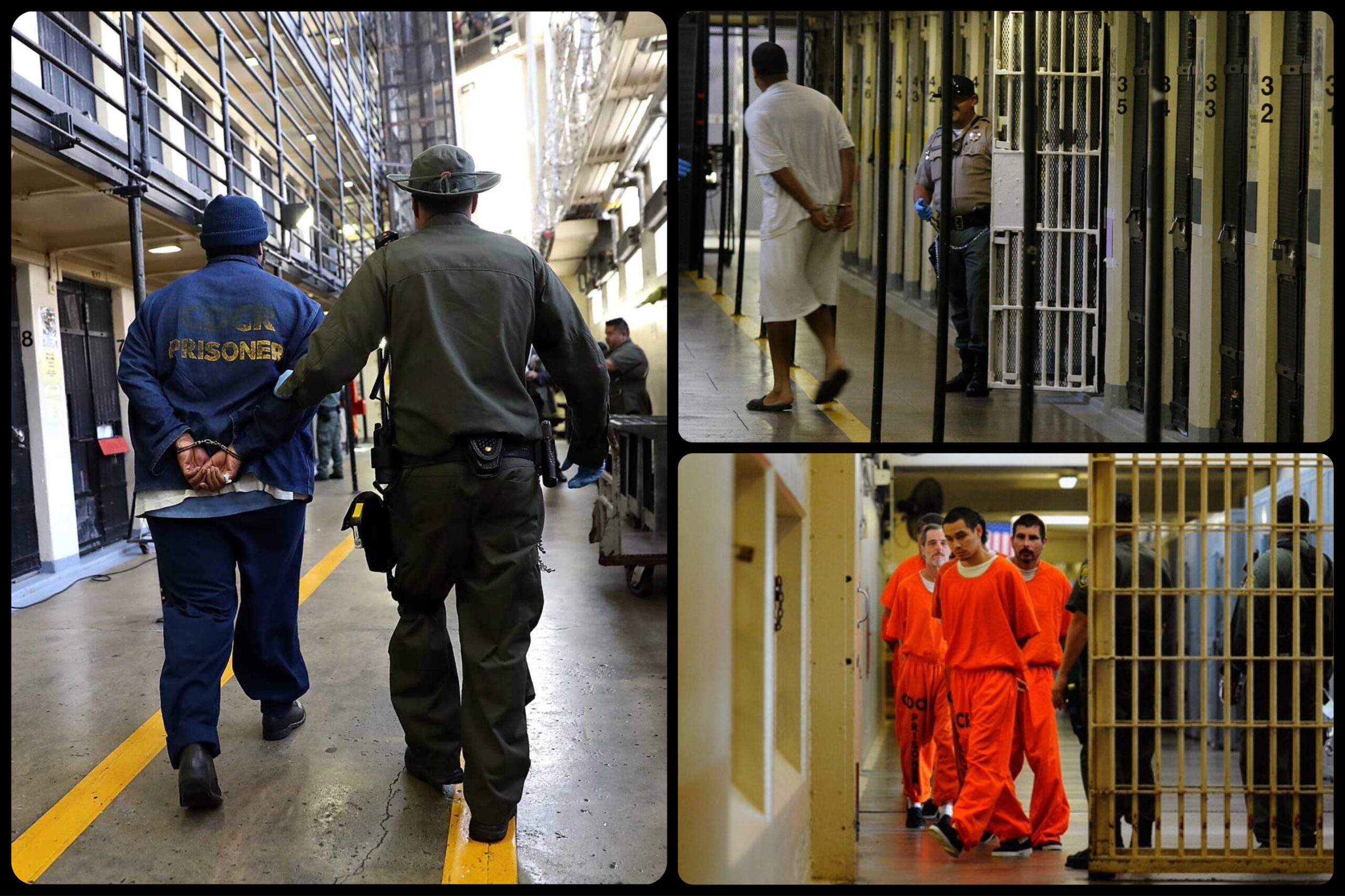San Quentin State Prison (SQ) is a male correctional facility under the jurisdiction of the California Department of Corrections and Rehabilitation. Situated in Marin County, just north of San Francisco, it is situated within the unincorporated area of San Quentin.
Founded in 1852 and inaugurated in 1854, San Quentin stands as California’s oldest correctional facility. Within its confines, one can find the state’s sole death row dedicated to male inmates, which happens to be the largest of its kind in the United States. While equipped with a gas chamber, the prison transitioned to lethal injection for execut!ons back in 1996, although no executions have occurred there since 2006.
Over the years, San Quentin has been the backdrop for various forms of media, including film, radio dramas, videos, podcasts, and television shows. It’s also been the focal point of numerous books and has even played host to concerts. Notably, the prison has housed a number of infamous inmates.

Despite many localities in the region being named after Roman Catholic saints, and “San Quintín” translating to “Saint Quentin” in Spanish, the prison was not named after the saint. Instead, it took its name from the land it occupies, Point Quentin, which was named after a Coast Miwok warrior named Quentín. This warrior, who fought under Chief Marin, was captured at that location.
California’s first prison began in 1851, not as a traditional facility, but as a 268-ton wooden ship named the Waban. This vessel was anchored in San Francisco Bay and retrofitted to accommodate 30 inmates. Remarkably, some of the Waban’s timber has been incorporated into the new hospital structure within the prison. After a series of land transactions and a legislative scandal, inmates who had been confined on the Waban undertook the construction of San Quentin. The prison’s first cell block, affectionately known as “the Stones,” was established in 1854. While newer additions were constructed above it, this initial unit served as a dungeon and remains preserved to this day, making it one of California’s oldest surviving public works.
In an unusual historical note, in 1928, a woman by the name of Dorothy Mackaye, identified as #440960, served less than ten months of a one- to three-year sentence at San Quentin.
A prominent figure in the history of San Quentin was Warden Clinton Duffy, who served from 1940 to 1952. Warden Duffy’s leadership was marked by intriguing contradictions. Publicly, he earned praise for introducing fresh perspectives that led to the restructuring of the prison and improvements in its management. Prior to Duffy’s tenure, San Quentin had endured years of v!olence, cruel punishments, and civil rights v!olations against inmates, resulting in the resignation of the previous warden. Duffy took decisive action by dismissing abusive prison guards and introducing positive changes, such as hiring a librarian, psychiatrists, and several surgeons.

His press agent highlighted these sweeping reforms; however, San Quentin remained a harsh environment where prisoners continued to face v!olence, including f@tal beatings. Notably, the use of t*rture as an approved interrogation method at San Quentin was banned in 1944.
In 1941, a significant milestone occurred when the first Alcoholics Anonymous meeting within a prison took place at San Quentin. In recognition of this, the 25-millionth copy of the AA Big Book was presented to Jill Brown, a resident of San Quentin, during the International Convention of Alcoholics Anonymous in Toronto, Ontario, Canada.
Furthermore, in 1947, Warden Duffy recruited Herman Spector to serve as an assistant warden at San Quentin. Spector, however, declined the position and instead chose to become the senior librarian with the aim of implementing his innovative theories on reading as a means to foster pro-social behavior. By 1955, Spector’s ideas were gaining recognition in library journals, underscoring the potential for the prison library to significantly contribute to the rehabilitation of inmates.
Within the prison’s dining hall, six sepia-toned murals, each spanning an impressive 20 feet, adorn the walls, depicting moments from California’s history. The creation of these artworks is credited to Alfredo Santos, a once-convicted heroin dealer who found success as an artist during his incarceration from 1953 to 1955. Notably, Santos was restricted to using a thinned, raw sienna oil paint, as he was denied access to other colors for his paintings.
In a different era, Lawrence Singleton, a perpetrator of a heinous crime involving the assault and disfigurement of a teenage girl, spent a year on parole within a trailer on the San Quentin grounds between 1987 and 1988. Towns in California had refused to accept him as a parolee, leading to this unusual situation.
Between 1992 and 1997, San Quentin hosted a “boot camp” program aimed at rehabilitating first-time, nonv!olent offenders. Unfortunately, the program was discontinued because it failed to reduce recidivism or save costs.
In 2005, a court-ordered report highlighted numerous issues within the prison, including its age, antiquated facilities, poor staffing, inadequate medical resources, and severe overcrowding. Later that year, the warden was dismissed for threatening disciplinary action against a doctor who had spoken to attorneys about healthcare problems in the prison. By 2007, a new trauma center had been established within the facility, and plans were underway to construct a new $175 million medical complex.

In 2020, San Quentin found itself at the epicenter of a COVID-19 outbreak. The situation was exacerbated when a group of inmates were transferred to the prison from the California Institution for Men in Chino, California. Initial reports suggested that San Quentin officials had been informed that the new inmates had all tested negative; however, few had actually been tested. By June 22, at least 350 inmates and staff had tested positive, an outcome described by a federal judge as a “significant failure” of policy.
Some of the Notable Inmates in this Facility
Here is a summarized list of individuals sentenced to death in San Quentin State Prison:
- Isauro Aguirre (born 1980): Convicted of tortur!ng and k!lling Gabriel Fernandez, along with his girlfriend Pearl Fernandez.
- Jeffrey Aguilar (born 1985): Sentenced to death for the m*rder of Oxnard business owner, Gurmohinder Singh.
- Alejandro Avila (born 1971): Convicted for the r*pe and m*rder of 5-year-old Samantha Runnion.
- Richard Delmer Boyer (born 1958): Convicted for st*bbing an elderly couple to death while under the influence.
- Luis Bracamontes (born 1970): An illegal immigrant who shot and k!lled two Sacramento police officers.
- Vincent Brothers (born 1962): Convicted in the shooting and st*bbing of five family members.
- Albert Greenwood Brown (born 1954): Convicted r*pist and child m*lester who r*ped and m*rdered a teenager.
- Brandon Browner (born 1984): Former NFL player found guilty of attempted m*rder.
- David Carpenter (born 1930): A serial ki!ler known as the “Trailside K!ller.”
- Dean Carter (born 1955): Serial k!ller convicted of m*rdering four women.
- Steven David Catlin (born 1944): Serial k!ller who poisoned two wives and his mother.
- Doug Clark (born 1948): Serial k!ller and necroph!le who k!lled six women with a female accomplice.
- Kevin Cooper (born 1958): Convicted for the hatchet and knife m*ssacre of the Ryen family.
- Tiequon Cox (born 1965): Sentenced to death for the 1984 m*rders of four relatives of former NFL player Kermit Alexander.
- Jonathan Daniel D’Arcy (born 1962): Convicted of first-degree m*rder in the burning death of Karen Marie Laborde.
- Joseph Danks (born 1962): Known as the “Koreatown Slasher” who m*rdered six homeless men.
- Bruce Davis (born 1942): Member of the Manson family convicted of m*rder.
- Richard Allen Davis (born 1954): Convicted of k!dnapping and m*rdering Polly Klaas.
- Skylar Deleon (born 1979): Former child actor and triple m*rderer responsible for the deaths of Thomas and Jackie Hawks.
- Sonny Enraca (born 1972): Gang member who shot and k!lled Boyz n the Hood actor Dedrick D. Gobert.
Please note that these are brief summaries of the cases, and there are more individuals on death row at San Quentin State Prison with their respective convictions and sentences.
